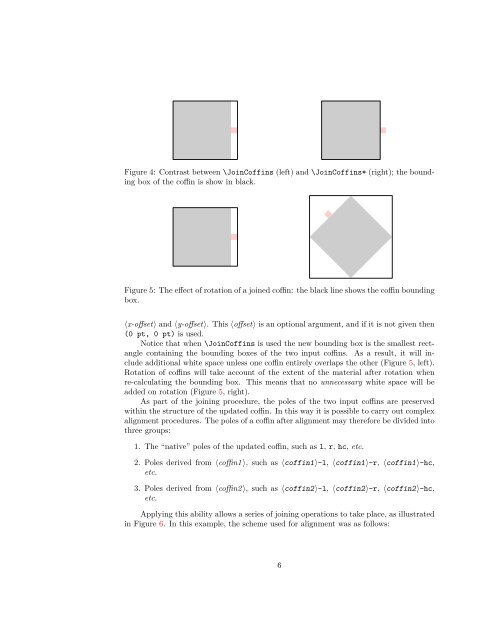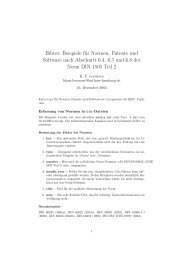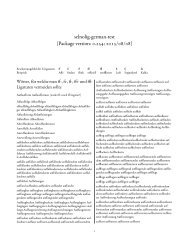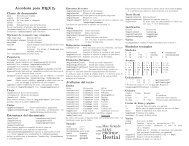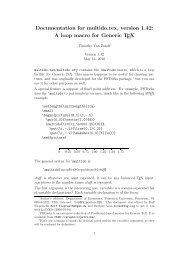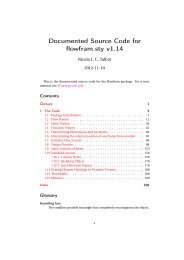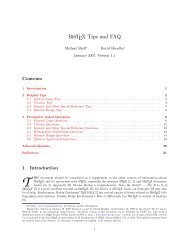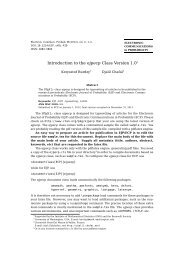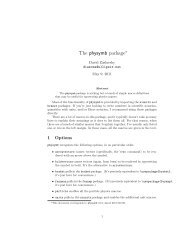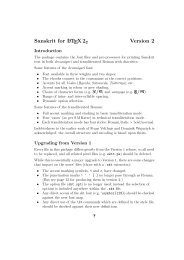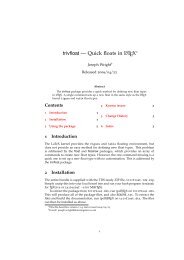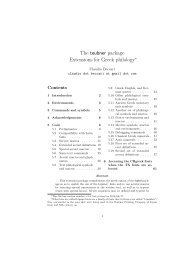xcoffins.pdf. - CTAN
xcoffins.pdf. - CTAN
xcoffins.pdf. - CTAN
You also want an ePaper? Increase the reach of your titles
YUMPU automatically turns print PDFs into web optimized ePapers that Google loves.
Figure 4: Contrast between \JoinCoffins (left) and \JoinCoffins* (right); the bounding<br />
box of the coffin is show in black.<br />
Figure 5: The effect of rotation of a joined coffin: the black line shows the coffin bounding<br />
box.<br />
〈x-offset〉 and 〈y-offset〉. This 〈offset〉 is an optional argument, and if it is not given then<br />
(0 pt, 0 pt) is used.<br />
Notice that when \JoinCoffins is used the new bounding box is the smallest rectangle<br />
containing the bounding boxes of the two input coffins. As a result, it will include<br />
additional white space unless one coffin entirely overlaps the other (Figure 5, left).<br />
Rotation of coffins will take account of the extent of the material after rotation when<br />
re-calculating the bounding box. This means that no unnecessary white space will be<br />
added on rotation (Figure 5, right).<br />
As part of the joining procedure, the poles of the two input coffins are preserved<br />
within the structure of the updated coffin. In this way it is possible to carry out complex<br />
alignment procedures. The poles of a coffin after alignment may therefore be divided into<br />
three groups:<br />
1. The “native” poles of the updated coffin, such as l, r, hc, etc.<br />
2. Poles derived from 〈coffin1 〉, such as 〈coffin1〉-l, 〈coffin1〉-r, 〈coffin1〉-hc,<br />
etc.<br />
3. Poles derived from 〈coffin2 〉, such as 〈coffin2〉-l, 〈coffin2〉-r, 〈coffin2〉-hc,<br />
etc.<br />
Applying this ability allows a series of joining operations to take place, as illustrated<br />
in Figure 6. In this example, the scheme used for alignment was as follows:<br />
6


